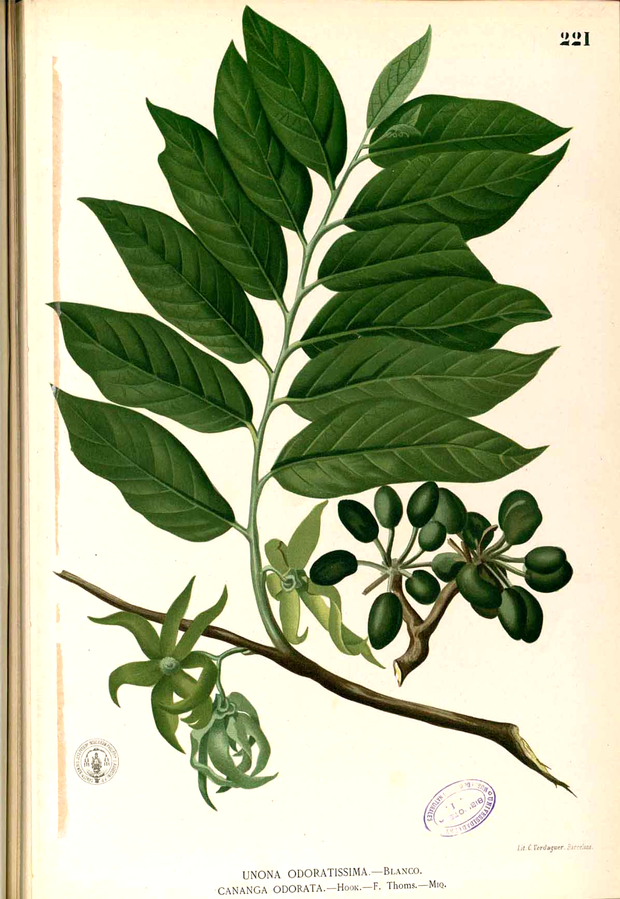Discover this intoxicating narcotic blossom from the tropics! Learn how the complex aroma of this flower is separated into different fractions to have different magical effects in perfume...
What is Ylang Ylang?
Ylang Ylang, also known as Cananga, is a flowering tree found in the hot, humid climates of South East Asia. The Canaga is an evergreen tree that produces its extremely fragrant blossoms all year round. The oil extracted from its ruffle-y yellow blossoms is one of the most extensively used materials in the perfume industry. Odds are you have smelled this one before! This material is used in all kinds of fragranced products such as shampoos, detergents, perfume and candles. If you are not sure, smell Chanel N°5, it's in there for sure!
What does it smell like?
Well, that depends on the fraction, but generally it smells strongly floral, like jasmine, spicy in the clove and black pepper direction, smokey, medicinal and fruity. It is often used to support a jasmine note in a fragrance because it is a little more bold and is much less expensive. Ylang Ylang is also often described as sensual and yet it can have a calming effect and is often used in aroma therapy.

What are fractions?
Let's talk about the different fractions! Ylang Ylang essential oil is made up of the many different chemical components that are responsible for its intoxicating smell. The different chemical components smell different, and can be isolated into fractions to achieve specific odor profiles.
How does this work?
During a steam and water distillation, the specific gravity of the oil is tested at different times to determine the fraction. For example Ylang ylang extra superior is collected during the first half hour of distillation when the specific gravity is > 0.965. Depending on the desired effect, a perfumer may choose a specific fraction. The most commonly sought after fraction is Ylang Ylang Extra, but it comes with a higher cost and is generally used in fine fragrance.
The Extra fraction is the first to be collected during distillation and so it contains more of the strong volatile aroma chemicals like p-cresyl methyl ether, benzyl acetate, and methyl benzoate. Other fractions include 1st grade, 2nd grade and the 3rd grade (which is collected last and so it has a slight burnt note).
Final thoughts...
The perfumer has lot's of choices when it comes to grades of Ylang Ylang. In addition to these different fractions, there are reconstitutions made using a combination of fractions and sometimes synthetic aroma chemicals. My personal favorite is Lisylang made by Robertet, which emphasizes the delicate petal notes and spicy smokey quality of Ylang Ylang.
Further Resources:
Image 1 Attribution: Ks.mini, CC BY-SA 3.0 <https://creativecommons.org/licenses/by-sa/3.0>, via Wikimedia Commons https://commons.wikimedia.org/wiki/File:Cananga_flower.JPG
https://www.fragrantica.com/perfume/Chanel/Chanel-No-5-Eau-de-Parfum-40069.html
https://salvatorebattaglia.com.au/essential-oils/42-ylang-ylang
Image 2 Attribution: Francisco Manuel Blanco (O.S.A.), Public domain, via Wikimedia Commons https://commons.wikimedia.org/wiki/File:Cananga_odorata_Blanco1.221-original.png











Commentaires